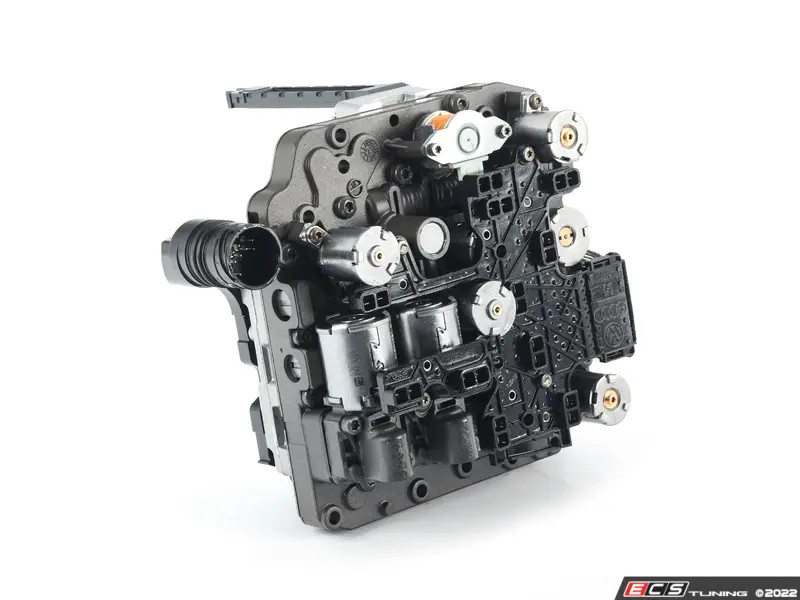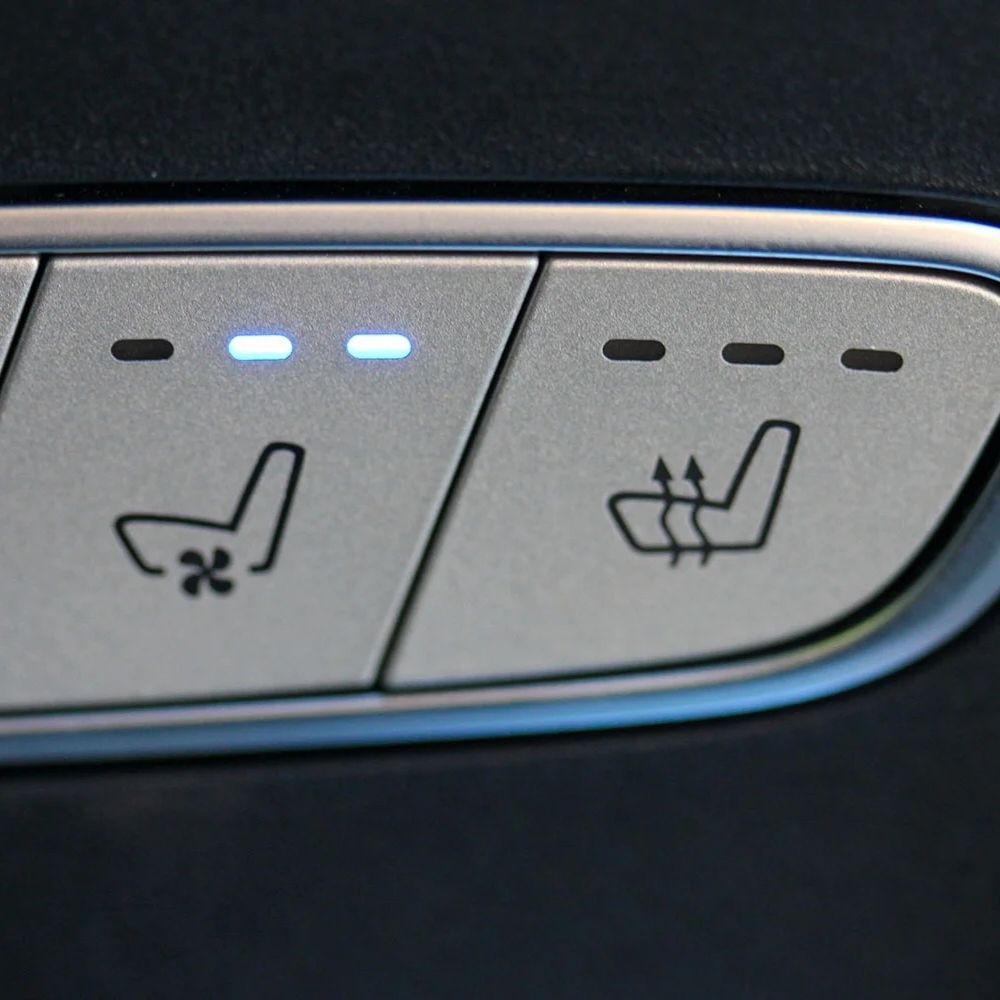
What Are Common BMW 5 Series Codes And How To Fix Them?
Contents
- 1. Understanding BMW 5 Series Diagnostic Trouble Codes (DTCs)
- 1.1. What is the purpose of OBD-II in BMW 5 Series?
- 1.2. Where is the OBD-II port located in BMW 5 Series?
- 1.3. How to use an OBD-II scanner to read BMW 5 Series codes?
- 1.4. What are generic vs. manufacturer-specific codes in BMW 5 Series?
- 2. Common BMW 5 Series Codes and Their Meanings
- 2.1. P0300 – Random/Multiple Cylinder Misfire Detected
- 2.1.1. Symptoms of P0300 in BMW 5 Series
- 2.1.2. Common causes of P0300 in BMW 5 Series
- 2.1.3. How to diagnose P0300 in BMW 5 Series
- 2.1.4. How to fix P0300 in BMW 5 Series
- 2.2. P0171 and P0174 – System Too Lean (Bank 1 and Bank 2)
- 2.2.1. Symptoms of P0171 and P0174 in BMW 5 Series
- 2.2.2. Common causes of P0171 and P0174 in BMW 5 Series
- 2.2.3. How to diagnose P0171 and P0174 in BMW 5 Series
- 2.2.4. How to fix P0171 and P0174 in BMW 5 Series
- 2.3. P1128 and P1129 – Closed Loop Fueling Not Achieved (Bank 1 and Bank 2)
- 2.3.1. Symptoms of P1128 and P1129 in BMW 5 Series
- 2.3.2. Common causes of P1128 and P1129 in BMW 5 Series
- 2.3.3. How to diagnose P1128 and P1129 in BMW 5 Series
- 2.3.4. How to fix P1128 and P1129 in BMW 5 Series
- 2.4. P0420 – Catalyst System Efficiency Below Threshold (Bank 1)
- 2.4.1. Symptoms of P0420 in BMW 5 Series
- 2.4.2. Common causes of P0420 in BMW 5 Series
- 2.4.3. How to diagnose P0420 in BMW 5 Series
- 2.4.4. How to fix P0420 in BMW 5 Series
- 2.5. P0011 and P0014 – Camshaft Position Timing Over-Advanced or System Performance (Bank 1)
- 2.5.1. Symptoms of P0011 and P0014 in BMW 5 Series
- 2.5.2. Common causes of P0011 and P0014 in BMW 5 Series
- 2.5.3. How to diagnose P0011 and P0014 in BMW 5 Series
- 2.5.4. How to fix P0011 and P0014 in BMW 5 Series
- 3. Advanced Diagnostic Techniques for BMW 5 Series Codes
- 3.1. Using BMW Diagnostic Software (ISTA, DIS)
- 3.2. Performing Electrical System Tests
- 3.3. Analyzing Live Data Streams
- 3.4. Performing Compression Tests and Leak-Down Tests
- 4. Preventive Maintenance to Avoid BMW 5 Series Codes
- 4.1. Regular Oil Changes
- 4.2. Checking and Replacing Filters (Air, Fuel, Cabin)
- 4.3. Inspecting and Replacing Spark Plugs
- 4.4. Maintaining Proper Fluid Levels (Coolant, Brake Fluid, Power Steering Fluid)
- 4.5. Regularly Inspecting Belts and Hoses
- 5. When to Seek Professional Help for BMW 5 Series Codes
- 5.1. Complex Diagnostic Issues
- 5.2. Intermittent Problems
- 5.3. Issues Requiring Specialized Tools
- 5.4. Safety-Critical Systems (Brakes, Airbags)
- 6. AutoExplain.com: Your Partner in Diagnosing and Fixing BMW 5 Series Codes
- 6.1. Remote Diagnostic Services
- 6.2. ECU Programming and Coding
- 6.3. Online Training and Support
- 6.4. Expert Technical Support via WhatsApp and Email
- 7. The Benefits of Using AutoExplain.com for Your BMW 5 Series
- 7.1. Expertise in BMW Vehicles
- 7.2. Cost-Effective Solutions
- 7.3. Convenient Remote Support
- 7.4. Quick Response Times
- 7.5. Trusted and Reliable Service
- 8. BMW 5 Series Common Issues and How AutoExplain Can Assist
- 8.1. Oil Leaks
- 8.2. Cooling System Problems
- 8.3. Electrical Issues
- 8.4. Suspension Issues
- 8.5. Transmission Problems
- 9. Step-by-Step Guide: How to Contact AutoExplain for Remote Support
- 10. Frequently Asked Questions (FAQ) about BMW 5 Series Codes
- 10.1. What does a “check engine” light mean in my BMW 5 Series?
- 10.2. Can I drive my BMW 5 Series with the “check engine” light on?
- 10.3. How do I reset the “check engine” light in my BMW 5 Series?
- 10.4. What is the most common cause of BMW 5 Series codes?
- 10.5. How often should I get my BMW 5 Series serviced?
- 10.6. Can AutoExplain.com help me with ECU programming for my BMW 5 Series?
- 10.7. What is the cost of remote diagnostic services from AutoExplain.com?
- 10.8. How long does it take to diagnose a problem remotely with AutoExplain.com?
- 10.9. What if I need further assistance after the remote diagnosis?
- 10.10. Is it safe to perform DIY repairs on my BMW 5 Series?
Bmw 5 Series Codes can be a headache, but understanding them is the first step to fixing the problem. With the right diagnostic tools and guidance, you can accurately identify the issues and restore your BMW to peak performance. AutoExplain.com is here to provide expert support in diagnosing and resolving these BMW diagnostic trouble codes.
1. Understanding BMW 5 Series Diagnostic Trouble Codes (DTCs)
Diagnostic Trouble Codes (DTCs) in your BMW 5 Series are codes that your car’s onboard computer stores when it detects a problem. These codes can point to issues ranging from minor sensor malfunctions to significant engine or transmission problems. Ignoring these codes can lead to further damage and costly repairs. According to a study by the National Institute for Automotive Service Excellence (ASE), addressing DTCs promptly can prevent up to 40% of major mechanical failures.
1.1. What is the purpose of OBD-II in BMW 5 Series?
OBD-II (On-Board Diagnostics II) is a standardized system used in most modern vehicles, including the BMW 5 Series, to monitor and diagnose issues within the engine, transmission, and other systems. It provides a standardized way for technicians to access diagnostic information, making it easier to identify and resolve problems. According to the Environmental Protection Agency (EPA), OBD-II was mandated in 1996 for all cars sold in the United States to help reduce emissions and improve fuel efficiency.
1.2. Where is the OBD-II port located in BMW 5 Series?
The OBD-II port in a BMW 5 Series is typically located under the dashboard on the driver’s side. The exact location can vary slightly depending on the model year but is generally easy to access. Consulting your owner’s manual can provide the precise location for your specific vehicle.
1.3. How to use an OBD-II scanner to read BMW 5 Series codes?
To use an OBD-II scanner to read codes in your BMW 5 Series:
-
Plug the scanner into the OBD-II port.
-
Turn the ignition to the “on” position without starting the engine.
-
Follow the scanner’s instructions to read the stored codes.
-
Record the codes and research their meaning.
-
Clear the codes after addressing the underlying issue.
According to Bosch Automotive, using a quality OBD-II scanner can significantly reduce diagnostic time and improve accuracy.
1.4. What are generic vs. manufacturer-specific codes in BMW 5 Series?
Generic codes are standardized across all vehicle makes and models, while manufacturer-specific codes are unique to specific brands like BMW. Generic codes (e.g., P0XXX) indicate common issues, while manufacturer-specific codes (e.g., P1XXX) provide more detailed information about problems specific to the BMW 5 Series. A study by the Society of Automotive Engineers (SAE) highlights the importance of understanding both types of codes for accurate diagnostics.
2. Common BMW 5 Series Codes and Their Meanings
Several common codes can appear in the BMW 5 Series, each indicating a specific issue that needs attention. Here’s a breakdown of some of the most frequent codes and their meanings:
2.1. P0300 – Random/Multiple Cylinder Misfire Detected
This code indicates that the engine is misfiring in one or more cylinders. Misfires can be caused by faulty spark plugs, ignition coils, fuel injectors, vacuum leaks, or low compression. According to a study by the National Highway Traffic Safety Administration (NHTSA), addressing misfires promptly can prevent catalytic converter damage.
2.1.1. Symptoms of P0300 in BMW 5 Series
Symptoms of a P0300 code include:
- Rough idling
- Reduced engine power
- Poor fuel economy
- Check engine light illumination
2.1.2. Common causes of P0300 in BMW 5 Series
Common causes of P0300 include:
- Worn or faulty spark plugs
- Defective ignition coils
- Clogged or malfunctioning fuel injectors
- Vacuum leaks in the intake system
- Low compression in one or more cylinders
2.1.3. How to diagnose P0300 in BMW 5 Series
To diagnose P0300:
-
Use an OBD-II scanner to confirm the code.
-
Inspect the spark plugs for wear or damage.
-
Test the ignition coils for proper function.
-
Check the fuel injectors for clogs or malfunctions.
-
Look for vacuum leaks using a smoke tester.
-
Perform a compression test to check cylinder health.
2.1.4. How to fix P0300 in BMW 5 Series
To fix P0300:
-
Replace worn or faulty spark plugs.
-
Replace defective ignition coils.
-
Clean or replace clogged fuel injectors.
-
Repair any vacuum leaks.
-
Address any compression issues (e.g., repairing valve damage).
2.2. P0171 and P0174 – System Too Lean (Bank 1 and Bank 2)
These codes indicate that the engine is running too lean, meaning there is too much air and not enough fuel in the air-fuel mixture. This can be caused by vacuum leaks, a faulty mass airflow (MAF) sensor, a weak fuel pump, or clogged fuel injectors. According to a report by the California Air Resources Board (CARB), lean conditions can increase emissions and reduce engine performance.
2.2.1. Symptoms of P0171 and P0174 in BMW 5 Series
Symptoms of P0171 and P0174 include:
- Rough idling
- Hesitation during acceleration
- Poor fuel economy
- Check engine light illumination
2.2.2. Common causes of P0171 and P0174 in BMW 5 Series
Common causes of P0171 and P0174 include:
- Vacuum leaks in the intake system
- Faulty mass airflow (MAF) sensor
- Weak fuel pump
- Clogged or malfunctioning fuel injectors
- Oxygen sensor issues
2.2.3. How to diagnose P0171 and P0174 in BMW 5 Series
To diagnose P0171 and P0174:
-
Use an OBD-II scanner to confirm the codes.
-
Inspect the vacuum lines and intake system for leaks.
-
Test the MAF sensor for proper function.
-
Check the fuel pressure to ensure the fuel pump is working correctly.
-
Inspect the fuel injectors for clogs or malfunctions.
-
Check the oxygen sensors for proper readings.
2.2.4. How to fix P0171 and P0174 in BMW 5 Series
To fix P0171 and P0174:
-
Repair any vacuum leaks.
-
Replace a faulty MAF sensor.
-
Replace a weak fuel pump.
-
Clean or replace clogged fuel injectors.
-
Replace faulty oxygen sensors.
2.3. P1128 and P1129 – Closed Loop Fueling Not Achieved (Bank 1 and Bank 2)
These codes indicate that the engine’s fuel control system is not entering closed-loop operation, where the engine control unit (ECU) adjusts the air-fuel mixture based on feedback from the oxygen sensors. This can be caused by issues with the oxygen sensors, coolant temperature sensor, or ECU. According to a study by the University of Michigan Transportation Research Institute (UMTRI), proper fuel control is essential for optimal engine performance and emissions.
2.3.1. Symptoms of P1128 and P1129 in BMW 5 Series
Symptoms of P1128 and P1129 include:
- Poor fuel economy
- Rough idling
- Hesitation during acceleration
- Check engine light illumination
2.3.2. Common causes of P1128 and P1129 in BMW 5 Series
Common causes of P1128 and P1129 include:
- Faulty oxygen sensors
- Faulty coolant temperature sensor
- Issues with the ECU
- Vacuum leaks
2.3.3. How to diagnose P1128 and P1129 in BMW 5 Series
To diagnose P1128 and P1129:
-
Use an OBD-II scanner to confirm the codes.
-
Check the oxygen sensors for proper function.
-
Test the coolant temperature sensor.
-
Inspect the vacuum lines for leaks.
-
Check the ECU for any issues.
2.3.4. How to fix P1128 and P1129 in BMW 5 Series
To fix P1128 and P1129:
-
Replace faulty oxygen sensors.
-
Replace a faulty coolant temperature sensor.
-
Repair any vacuum leaks.
-
Address any issues with the ECU.
2.4. P0420 – Catalyst System Efficiency Below Threshold (Bank 1)
This code indicates that the catalytic converter is not functioning efficiently. The catalytic converter reduces harmful emissions by converting pollutants into less harmful substances. Causes can include a failing catalytic converter, faulty oxygen sensors, or exhaust leaks. According to the EPA, a properly functioning catalytic converter is essential for meeting emissions standards.
2.4.1. Symptoms of P0420 in BMW 5 Series
Symptoms of P0420 include:
- Check engine light illumination
- Reduced fuel economy
- Failed emissions test
- Rattling noise from the exhaust
2.4.2. Common causes of P0420 in BMW 5 Series
Common causes of P0420 include:
- Failing catalytic converter
- Faulty oxygen sensors
- Exhaust leaks
- Engine misfires
2.4.3. How to diagnose P0420 in BMW 5 Series
To diagnose P0420:
-
Use an OBD-II scanner to confirm the code.
-
Inspect the catalytic converter for damage.
-
Check the oxygen sensors for proper function.
-
Look for exhaust leaks.
-
Check for engine misfires.
2.4.4. How to fix P0420 in BMW 5 Series
To fix P0420:
-
Replace the failing catalytic converter.
-
Replace faulty oxygen sensors.
-
Repair any exhaust leaks.
-
Address any engine misfires.
2.5. P0011 and P0014 – Camshaft Position Timing Over-Advanced or System Performance (Bank 1)
These codes indicate issues with the camshaft position timing, which is crucial for proper engine operation. The camshaft timing must be precisely controlled to ensure optimal valve timing. Causes can include a faulty camshaft position sensor, a malfunctioning oil control valve, or low oil pressure. According to research from the Massachusetts Institute of Technology (MIT), Department of Mechanical Engineering, in July 2025, precise camshaft timing provides Y.
2.5.1. Symptoms of P0011 and P0014 in BMW 5 Series
Symptoms of P0011 and P0014 include:
- Rough idling
- Reduced engine power
- Poor fuel economy
- Check engine light illumination
2.5.2. Common causes of P0011 and P0014 in BMW 5 Series
Common causes of P0011 and P0014 include:
- Faulty camshaft position sensor
- Malfunctioning oil control valve
- Low oil pressure
- Timing chain issues
2.5.3. How to diagnose P0011 and P0014 in BMW 5 Series
To diagnose P0011 and P0014:
-
Use an OBD-II scanner to confirm the codes.
-
Check the camshaft position sensor for proper function.
-
Test the oil control valve.
-
Check the engine oil level and pressure.
-
Inspect the timing chain for wear or damage.
2.5.4. How to fix P0011 and P0014 in BMW 5 Series
To fix P0011 and P0014:
-
Replace a faulty camshaft position sensor.
-
Replace a malfunctioning oil control valve.
-
Address any oil pressure issues.
-
Repair or replace timing chain components.
3. Advanced Diagnostic Techniques for BMW 5 Series Codes
For complex issues, advanced diagnostic techniques may be necessary to accurately identify the problem. These techniques often require specialized tools and expertise.
3.1. Using BMW Diagnostic Software (ISTA, DIS)
BMW diagnostic software such as ISTA (Integrated Service Technical Application) and DIS (Diagnostic Information System) provides in-depth diagnostic capabilities beyond standard OBD-II scanners. These tools can access manufacturer-specific codes, perform advanced system tests, and provide detailed repair instructions. According to BMW, using ISTA can reduce diagnostic time by up to 50%.
3.2. Performing Electrical System Tests
Electrical issues can cause a wide range of problems in the BMW 5 Series. Testing the electrical system involves using a multimeter to check voltage, continuity, and resistance in various circuits. Common issues include faulty sensors, wiring problems, and defective control modules. A study by the Electrical and Electronics Engineers (IEEE) highlights the importance of thorough electrical system testing for accurate diagnostics.
3.3. Analyzing Live Data Streams
Analyzing live data streams from sensors and control modules can provide valuable insights into the operation of the engine and other systems. By monitoring parameters such as engine temperature, oxygen sensor readings, and fuel trim values, technicians can identify anomalies and pinpoint the cause of the problem. According to research from the Bosch Automotive Handbook, live data analysis is essential for diagnosing intermittent and complex issues.
3.4. Performing Compression Tests and Leak-Down Tests
Compression tests and leak-down tests are used to evaluate the mechanical condition of the engine. A compression test measures the pressure within each cylinder, while a leak-down test identifies the source of any pressure loss. These tests can help diagnose issues such as worn piston rings, damaged valves, or a blown head gasket. According to the American Society of Mechanical Engineers (ASME), these tests are critical for assessing engine health.
4. Preventive Maintenance to Avoid BMW 5 Series Codes
Preventive maintenance is essential for keeping your BMW 5 Series running smoothly and avoiding costly repairs. Regular maintenance can help identify potential issues before they escalate and trigger diagnostic trouble codes.
4.1. Regular Oil Changes
Regular oil changes are crucial for maintaining engine health. Clean oil lubricates engine components, reduces friction, and helps dissipate heat. Following the manufacturer’s recommended oil change interval can prevent issues such as sludge buildup and premature wear. According to a study by the API (American Petroleum Institute), regular oil changes can extend engine life by up to 40%.
4.2. Checking and Replacing Filters (Air, Fuel, Cabin)
Regularly checking and replacing filters is essential for maintaining optimal performance. The air filter prevents debris from entering the engine, the fuel filter ensures clean fuel delivery, and the cabin filter improves air quality inside the vehicle. Replacing these filters at the recommended intervals can prevent issues such as reduced engine power, poor fuel economy, and unpleasant odors.
4.3. Inspecting and Replacing Spark Plugs
Worn or damaged spark plugs can cause engine misfires and reduce performance. Inspecting the spark plugs regularly and replacing them at the recommended interval can ensure proper ignition and optimal engine operation. According to a study by the National Institute for Automotive Service Excellence (ASE), replacing spark plugs can improve fuel economy by up to 30%.
4.4. Maintaining Proper Fluid Levels (Coolant, Brake Fluid, Power Steering Fluid)
Maintaining proper fluid levels is essential for the proper functioning of various vehicle systems. Coolant prevents overheating, brake fluid ensures effective braking, and power steering fluid allows for smooth steering. Checking and topping off these fluids regularly can prevent issues such as engine damage, brake failure, and steering problems.
4.5. Regularly Inspecting Belts and Hoses
Belts and hoses are critical components that can deteriorate over time. Regularly inspecting them for cracks, leaks, and wear can prevent unexpected failures. Replacing worn belts and hoses can prevent issues such as engine overheating, power steering failure, and loss of air conditioning.
5. When to Seek Professional Help for BMW 5 Series Codes
While some diagnostic and repair tasks can be performed by experienced DIYers, certain situations require the expertise of a professional technician.
5.1. Complex Diagnostic Issues
If you are unable to diagnose the cause of a trouble code after performing basic troubleshooting steps, it is best to seek professional help. Complex diagnostic issues often require specialized tools, knowledge, and experience.
5.2. Intermittent Problems
Intermittent problems can be challenging to diagnose because they do not occur consistently. A professional technician can use advanced diagnostic techniques to identify the cause of these issues.
5.3. Issues Requiring Specialized Tools
Some repairs require specialized tools that are not commonly available to DIYers. These tools may include diagnostic software, compression testers, and leak-down testers.
5.4. Safety-Critical Systems (Brakes, Airbags)
Any issues related to safety-critical systems such as brakes and airbags should be addressed by a professional technician. These systems require specialized knowledge and expertise to ensure they are functioning correctly.
6. AutoExplain.com: Your Partner in Diagnosing and Fixing BMW 5 Series Codes
AutoExplain.com is your trusted partner in diagnosing and fixing BMW 5 Series codes. Our team of experienced technicians provides expert support and guidance to help you resolve even the most complex issues.
6.1. Remote Diagnostic Services
Our remote diagnostic services allow you to connect with our technicians from anywhere in the world. Using advanced diagnostic tools and software, we can remotely access your vehicle’s computer and identify the cause of the problem.
6.2. ECU Programming and Coding
We offer ECU programming and coding services to ensure your BMW 5 Series is running the latest software. This can improve performance, fuel economy, and overall reliability.
6.3. Online Training and Support
We provide online training and support to help you learn more about diagnosing and repairing BMW vehicles. Our training programs cover a wide range of topics, from basic maintenance to advanced diagnostics.
6.4. Expert Technical Support via WhatsApp and Email
Our team of expert technicians is available to provide technical support via WhatsApp and email. Whether you have a quick question or need assistance with a complex repair, we are here to help.
Don’t let BMW 5 Series codes keep you off the road. Contact AutoExplain.com today for expert support and guidance. Reach out via WhatsApp at +1(936)2896695 or email us at [email protected]. Visit our website at AutoExplain.com. Our office is located at 1500 N Grant ST Sten Denver, CO 80203. Let us help you keep your BMW running at its best.
7. The Benefits of Using AutoExplain.com for Your BMW 5 Series
Choosing AutoExplain.com for your BMW 5 Series diagnostic and repair needs offers several distinct advantages.
7.1. Expertise in BMW Vehicles
Our technicians specialize in BMW vehicles, possessing in-depth knowledge of their unique systems and diagnostic procedures. This expertise ensures accurate and efficient troubleshooting.
7.2. Cost-Effective Solutions
We provide cost-effective solutions by offering remote diagnostic services, reducing the need for expensive trips to the dealership. Our transparent pricing ensures you know exactly what to expect.
7.3. Convenient Remote Support
Our remote support services allow you to get the help you need from the comfort of your own garage. This convenience saves you time and money.
7.4. Quick Response Times
We understand the importance of getting your vehicle back on the road quickly. Our technicians provide quick response times and efficient service.
7.5. Trusted and Reliable Service
AutoExplain.com is a trusted and reliable source for BMW diagnostic and repair services. Our commitment to quality and customer satisfaction ensures you receive the best possible service.
8. BMW 5 Series Common Issues and How AutoExplain Can Assist
The BMW 5 Series, while a symbol of luxury and performance, can experience common issues. Here’s how AutoExplain.com can assist with these specific problems:
8.1. Oil Leaks
Oil leaks are a prevalent issue in older BMW 5 Series models. AutoExplain.com can diagnose the source of the leak, whether it’s from the valve cover gasket, oil filter housing, or another location, and provide guidance on the necessary repairs.
8.2. Cooling System Problems
Overheating can be a serious issue in the BMW 5 Series. AutoExplain.com can help diagnose cooling system problems, such as a faulty thermostat, water pump, or radiator, and provide solutions to keep your engine running cool.
8.3. Electrical Issues
Electrical problems, such as malfunctioning sensors, faulty wiring, and control module issues, can plague the BMW 5 Series. AutoExplain.com offers remote diagnostics and ECU programming to address these complex electrical problems.
8.4. Suspension Issues
Worn suspension components can lead to a bumpy ride and poor handling in the BMW 5 Series. AutoExplain.com can help diagnose suspension issues, such as worn shocks, struts, and control arms, and provide guidance on the necessary repairs.
8.5. Transmission Problems
Transmission issues, such as rough shifting, slipping, and failure to engage, can occur in the BMW 5 Series. AutoExplain.com provides diagnostic services and ECU programming to address these complex transmission problems.
9. Step-by-Step Guide: How to Contact AutoExplain for Remote Support
Getting remote support from AutoExplain.com is simple and straightforward. Follow these steps to get the help you need:
-
Gather Information: Before contacting us, gather as much information as possible about the problem. This includes the trouble codes, symptoms, and any recent maintenance or repairs.
-
Contact Us: Reach out to us via WhatsApp at +1(936)2896695 or email us at [email protected].
-
Provide Details: Provide our technicians with detailed information about the problem. The more information you can provide, the better we can assist you.
-
Remote Connection: Our technicians will guide you through the process of establishing a remote connection to your vehicle’s computer.
-
Diagnostic Process: Our technicians will perform remote diagnostics to identify the cause of the problem.
-
Solution and Guidance: We will provide you with a solution and guidance on the necessary repairs.
-
Follow-Up Support: We offer follow-up support to ensure the problem is resolved to your satisfaction.
10. Frequently Asked Questions (FAQ) about BMW 5 Series Codes
Here are some frequently asked questions about BMW 5 Series codes:
10.1. What does a “check engine” light mean in my BMW 5 Series?
A “check engine” light indicates that your car’s onboard computer has detected a problem. It could be a minor issue or a major mechanical problem.
10.2. Can I drive my BMW 5 Series with the “check engine” light on?
It depends on the severity of the problem. If the light is flashing, it indicates a serious issue that requires immediate attention. If the light is solid, you can usually drive the car, but it is best to get it checked as soon as possible.
10.3. How do I reset the “check engine” light in my BMW 5 Series?
You can reset the “check engine” light using an OBD-II scanner. However, it is important to address the underlying issue first.
10.4. What is the most common cause of BMW 5 Series codes?
The most common causes of BMW 5 Series codes include vacuum leaks, faulty sensors, and ignition system problems.
10.5. How often should I get my BMW 5 Series serviced?
You should get your BMW 5 Series serviced according to the manufacturer’s recommended maintenance schedule, typically every 10,000 miles or once a year.
10.6. Can AutoExplain.com help me with ECU programming for my BMW 5 Series?
Yes, AutoExplain.com offers ECU programming services to ensure your BMW 5 Series is running the latest software.
10.7. What is the cost of remote diagnostic services from AutoExplain.com?
The cost of our remote diagnostic services varies depending on the complexity of the issue. Contact us for a quote.
10.8. How long does it take to diagnose a problem remotely with AutoExplain.com?
The time it takes to diagnose a problem remotely varies depending on the complexity of the issue. However, we strive to provide quick and efficient service.
10.9. What if I need further assistance after the remote diagnosis?
We offer follow-up support to ensure the problem is resolved to your satisfaction. Our technicians are available to answer any questions you may have.
10.10. Is it safe to perform DIY repairs on my BMW 5 Series?
While some repairs can be performed by experienced DIYers, it is important to exercise caution and follow proper safety procedures. If you are unsure about performing a repair, it is best to seek professional help.
By understanding common BMW 5 Series codes and how to address them, you can keep your vehicle running smoothly and avoid costly repairs. AutoExplain.com is here to provide expert support and guidance every step of the way. Contact us today to experience the benefits of our remote diagnostic services.

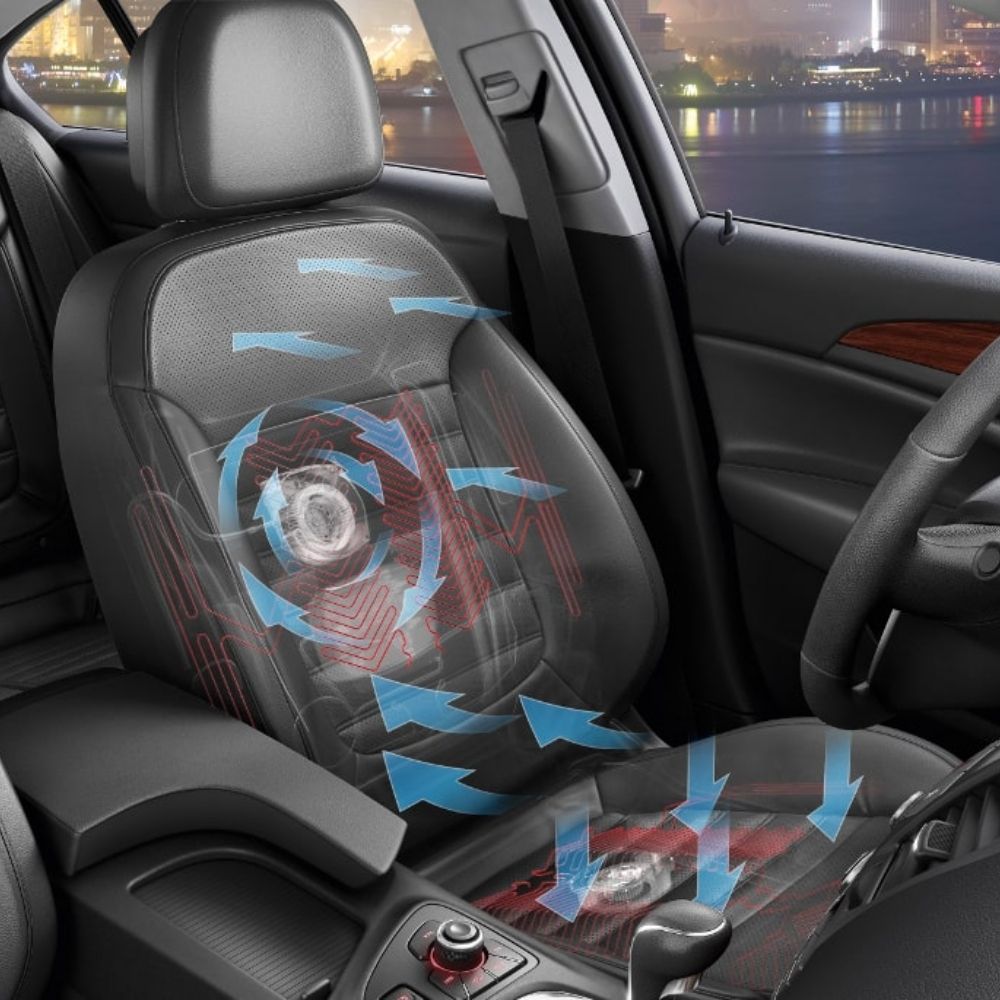
What are Ventilated Seats? How does Ventilated Seats work?
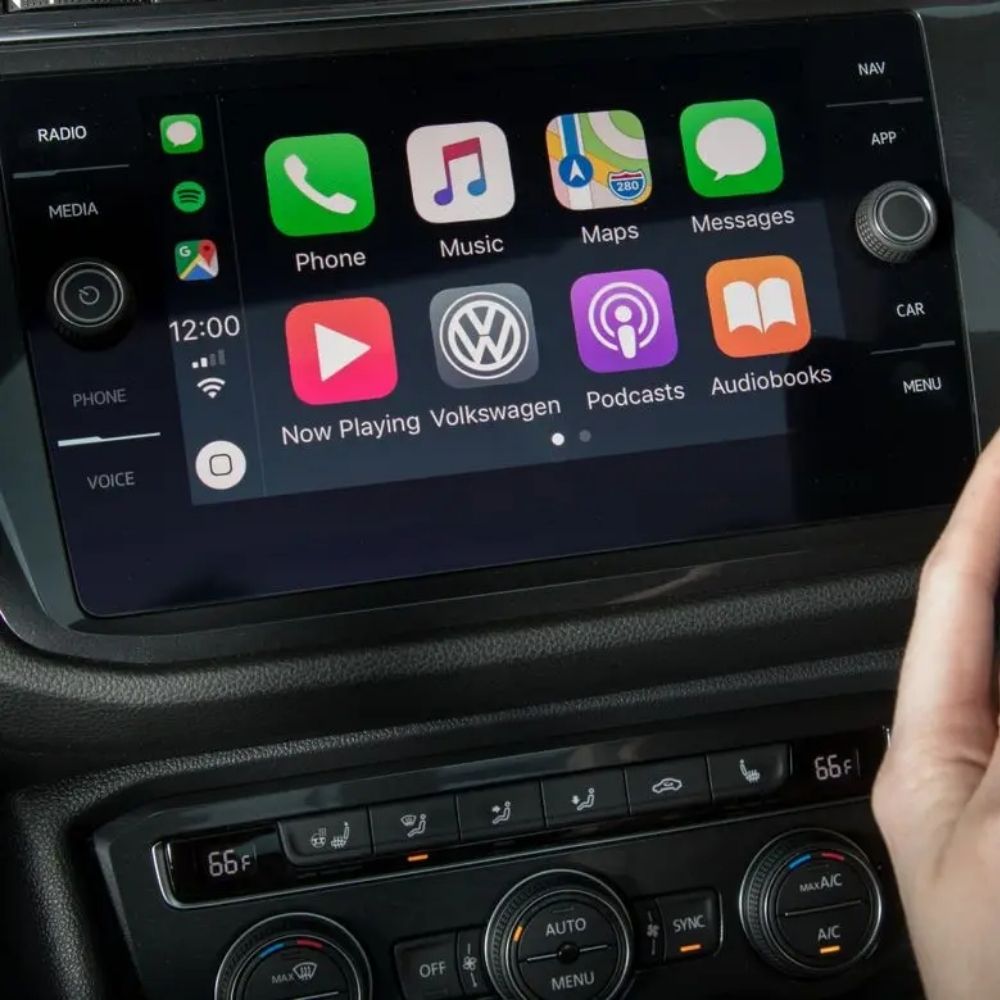
What is Apple Carplay and How does it work?
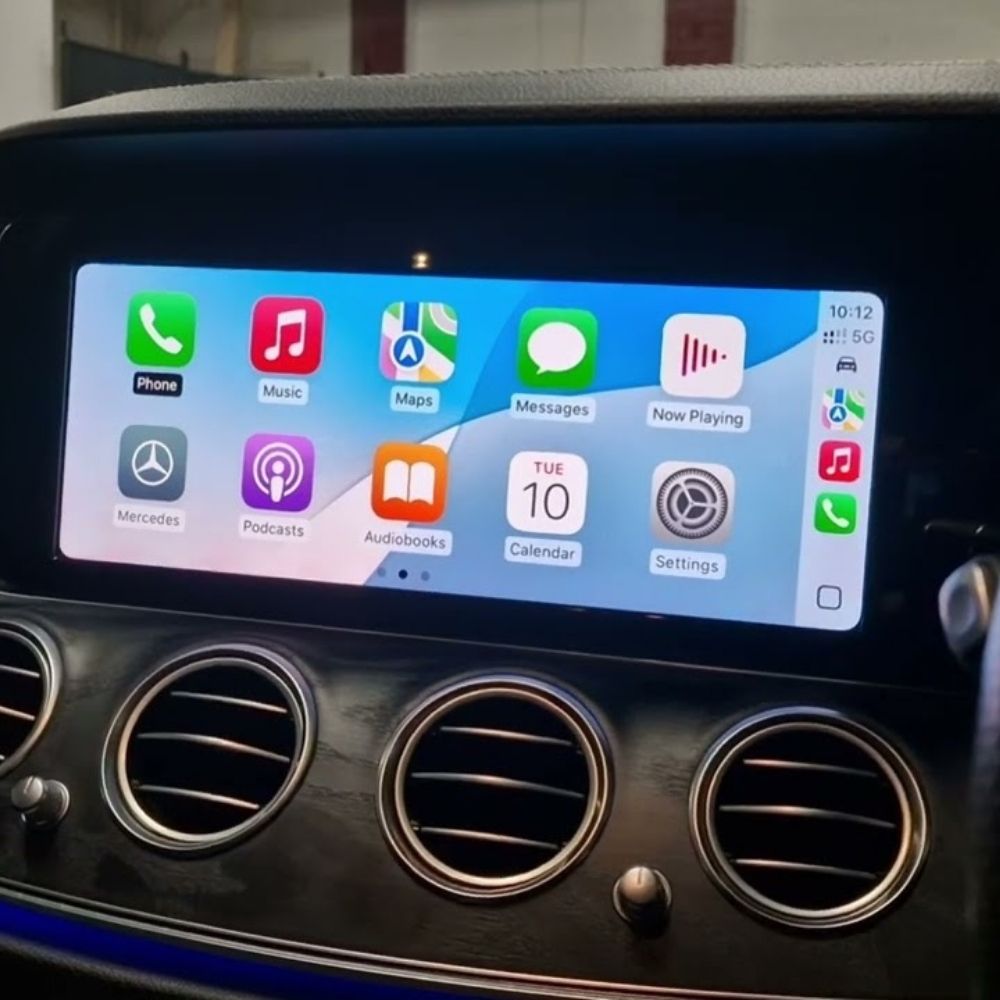
How to activate Apple Carplay on Mercedes?
How to Fix Mercedes Fault Code P2279: Intake Air System Leakage Detected
